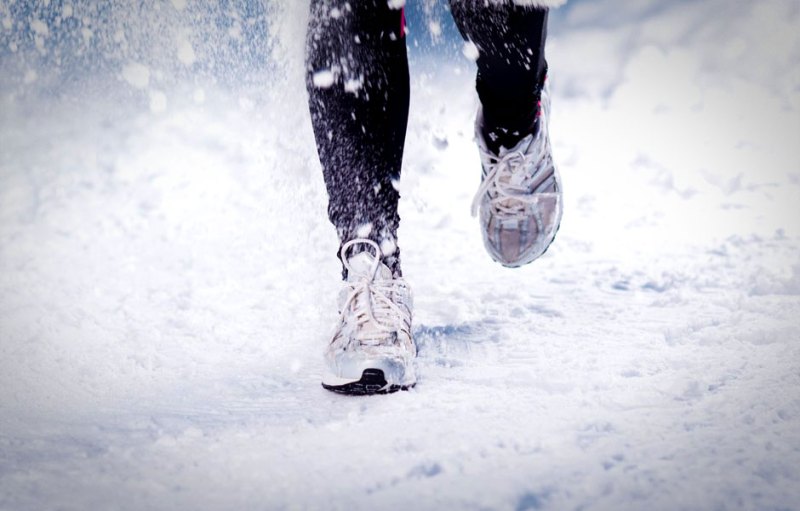
Trail running in the winter can certainly bring with it its own challenges, but as Pelletier tells us, it can be a lot of fun provided you are adequately prepared with the right equipment and follow a couple of simple pieces of advice. Here are his 5 tips for having fun while winter trail running this season.
1—Don’t Overdress, but Be Prepared
In colder months, the cold, damp air can instantly send chills down your spine the moment you step outside, making it tempting to want to layer up. You’ll quickly start to warm-up once you start moving and may find yourself in a sweat by the time you hit the first climb. You’ll then find yourself in a potentially dangerous situation once you start to cool down again on the way back down.
Try dressing for temperatures at least a few degrees warmer, and expect to be a little cold for the first few minutes of your run. Opt for tighter-fitting, wicking materials that cover your legs and arms but aren’t too thick. Dressing in layers that you can easily shed as you warm-up can help, and I like to bring something extra like a lightweight down jacket, in case I want to stop for a few minutes on a summit or I run into trouble.
2—Use Appropriate Traction
There are some entry-level traction devices available that work well for icy pavement, but on the trails I prefer something more robust like the Hillsound Trail Crampon Ultra. Running downhill can really put these devices to the test.
I’ve experimented with lightweight snowshoes designed for running, but have found them to be overkill for packed snow, while it’s difficult to actually ‘run’ in deep powder. Whatever you choose, be sure that they are light-weight and flexible enough and that they are appropriately sized for your specific shoes.
3—Consider Gortex Socks
Keeping your feet dry can be close to impossible in slushy conditions, and blood tends to flow away from our extremities to our core when we’re cold. There are quite a few models of Gortex shoes on the market, but snow can easily get in from the top unless you’re also wearing gaiters, and even then they tend to underperform.
I’ve found that by wearing Gortex socks, like the Rocky Stretch GORE-TEX Oversocks, paired with regular socks underneath for warmth and some quick-draining shoes does the trick. You may need to size up your shoes by a half or even a full size to allow for the extra bulk and maintain proper circulation.
4—Remember to Eat and Drink
It’s easy to forget to hydrate in cold weather because your body isn’t overheating in the same way it does in summer months, and eating can be difficult when wearing gloves. We’re often working even harder though when running on snowing terrain and burning more calories just to keep warm. The dryer air can also catch up with you if you’re not staying on top of your hydration.
5—Slow it Down and Lower Your Mileage
Running in snowy and icy conditions engages muscles differently and can tax the body in different ways, so expect to cover fewer miles in the same time you would on dry ground. Drop your mileage to give your stabilizing muscles a chance to develop slowly to avoid injury, and focus more on time-on-feet than on distance.
Jeff Pelletier is a trail and ultra runner born and raised in Vancouver, BC. He’s a member of Team Salomon Canada and winter running gear, Hillsound Equipment Ambassador. Check out photos, videos, and reports of his adventures on the trails at: http://jeffpelletier.com


